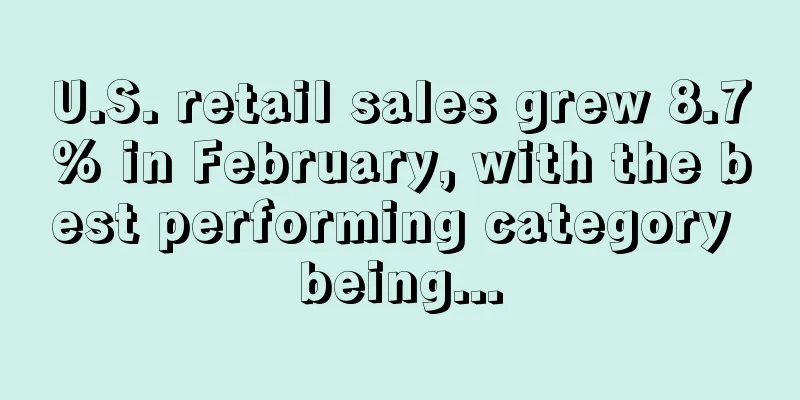Sellers are prepared for a large number of returns during the shopping season

|
Black Friday is only a week away, and the holiday shopping season is about to begin. For consumers , there will definitely be a few products on their holiday shopping lists that don't meet their expectations . Retailers are already preparing for a surge in returns .
Fast fashion companies such as BoHu and Zara are reported to have started charging for returns in the UK earlier this year ( but be aware that this strategy may cause consumer resistance ).
Before this year's holiday season , Walmart launched a new store return and door-to-door pickup service , and extended its return policy to January 31, 2023. Target consumers can also choose to return products directly to the store .
According to the National Retail Federation, last year, the volume of returns from U.S. consumers increased by 6%, with a value of more than $761 billion, accounting for 16.6% of total U.S. retail sales. More than two-thirds of retailers believe that returns are "normal losses" in the course of business .
But according to Appriss Retail, nearly all sellers (91%) are experiencing return rates that are growing faster than revenue. In addition , the return rate for online purchases is three to four times higher than the return rate for in-store purchases. According to Pitney Bowes, the average return cost for online purchases is 21% of the order value. On the other hand , some logistics operators have also begun to provide services to other companies. UPS plans to provide logistics service solutions to retailers, aiming to improve the delivery and return processes. Gap Inc. has also launched the GPS platform service to provide fulfillment and return logistics services.
Currently, reducing the return rate is the top priority for sellers , but most (69%) sellers do not understand the real reasons why consumers return products . Data shows that only 29% of merchants have a detailed return management plan, and 27% of merchants have executives responsible for returns .
In fact, there are many other ways for sellers to reduce return costs.
Nearly two-thirds of consumers said that sellers could reduce returns by adding more buyer shows , and more than half (59%) of consumers said that using VR try-on technology could also help reduce return rates .
In addition, consumers can be allowed to resell unwanted items to others , which can save sellers about $20 per order .
As the holiday season approaches, sellers should consider how to reduce returns while trying to increase sales. E-commerce return the goods |
>>: Profits of over 500 million! The big seller will become the "landlord" in the United States
Recommend
What is TNT? TNT Review, Features
TNT Express NV (TNT Group) is a courier and mail ...
What is Shenzhen Longbiao Logistics Co., Ltd.? Shenzhen Longbiao Logistics Co., Ltd. Review, Features
Shenzhen Longbiao Logistics Co., Ltd. is a logisti...
AliExpress announces the core highlights of 2021 Double 11, France will have its first "Cat Night"
As an important part of the overseas market of Tm...
After being forced to go on a blind date when returning home for the Chinese New Year, the cross-border resident said: I just wanted to pack my luggage and escape back to Shenzhen overnight!
After experiencing the ups and downs of 2020, it ...
During the epidemic, food and beverage transactions on the Tokopedia platform surged by 350%!
During the epidemic, residents of various countri...
What is Zhejiang Yinghe International Logistics Co., Ltd.? Zhejiang Yinghe International Logistics Co., Ltd. Review, Features
Zhejiang Yinghe International Logistics Co., Ltd....
What is Gypsy Mens? Gypsy Mens Review, Features
Gypsy Mens is a website that specializes in selli...
Fashion retailer Na-kd's sales exceed 2 billion Swedish kronor, up more than 56%
According to foreign media reports, Swedish fashi...
What is Keyword In? Keyword In Review, Features
Keyword In can randomly generate many long-tail k...
On the same list as SHEIN and Anker, its annual revenue increased from 600 million to 8 billion in 6 years.
Not long ago, the China Business News and Shenzhe...
2022 trend forecast: personal care and home products will still be the mainstream shopping!
Affected by the epidemic, the retail industry has...
The canal is blocked, and "themed T-shirts" are launched! Seller: It's gone cold before it became popular
During this period, the blockage of cargo ships i...
Polish e-commerce company Allegro's second-quarter revenue hit a record high!
According to foreign media reports, Allegro , Pol...
What is MFS Africa? MFS Africa Review, Features
<span data-docs-delta="[[20,{"gallery"...
Will you be banned even if you submit to QA? Many Amazon sellers have been affected
Just as sellers were gearing up for the peak seas...









